| Columns Retired Columns & Blogs |
Amrita AMRIT-MiniMonitor loudspeaker Measurements
Sidebar 2: Measurements
Footnote 1: This review, along with those of the Rogers 7T and Paradigm Control Monitor published in the same issue, was the last to be performed using a measurement system, that I developed myself. It comprised a home-brewed pulse generator with the sound of the loudspeaker reproducing that pulse fed to a Heathkit storage oscilloscope. I then used a FFT program that I wrote in Microsoft's QuickBasic programming language to analyze the impulse response captured by the 'scope and a graphing program I also wrote in QuickBasic to plot the spectra. But at the fall 1989 AES Convention in New York, I caught a demonstration of the brand-new MLSSA system from DRA Labs, which offered enormously flexible processing power and which we promptly purchased. I have used MLSSA ever since for Stereophile's loudspeaker reviews.—John Atkinson
I use a mixture of nearfield, in-room, and quasi-anechoic FFT techniques to investigate possible objective factors that might explain the sound heard (footnote 1).
As the Amrita MiniMonitor features first-order crossover filters, which can be time-coherent in behavior, I investigated the speaker's response to a 25µs rectangular pulse (fig.1). Fig.2 shows the manner in which this pulse shape is modified by the Amrita when the measuring microphone is on the tweeter axis, plotted over a 5ms window. The drivers appear to be connected in phase, but the up/down spike from the tweeter can be seen to lead the slower rise of the woofers in time. Some ringing from the tweeter also overlays the woofer output, which is still continuing at the right-hand edge of the window 2.5ms after the stimulus has been and gone.

Fig.1 25&181;s rectangular pulse used for the quasi-anechoic measurements (5ms time window).
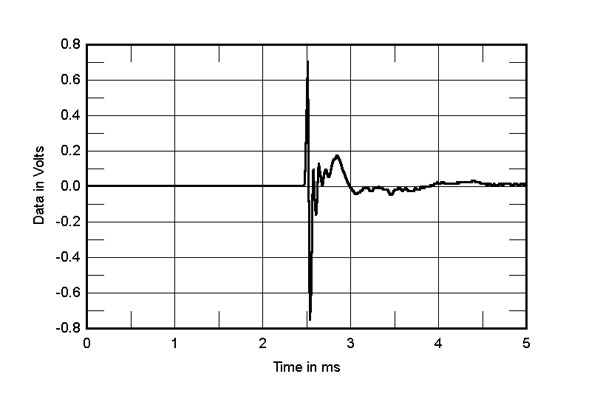
Fig.2 Amrita AMRIT-MiniMonitor, impulse response on tweeter axis at 50" (5ms time window).
Carrying out five such impulse measurements across a ±15° lateral window on the tweeter axis and averaging the resultant FFT-derived frequency responses indicates the spectrum of the first arrival-sound at the listener's ear without either the effect of the room or specific microphone-position-dependent interference effects influencing the measurement. The resultant response is shown on the right-hand side of fig.3. The main points to note are a degree of midrange prominence, coupled with a severe suckout between 2500Hz and 4kHz which is undoubtedly a crossover artifact specific to this axis. (Although a crossover point of 3.6kHz is quoted in the specifications, it appears from my measurements to be around 2500Hz.)
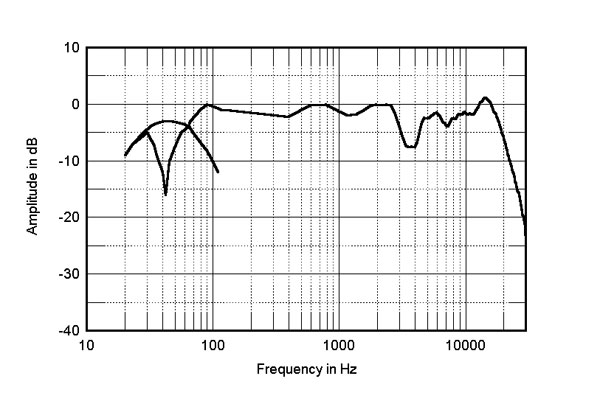
Fig.3 Amrita AMRIT-MiniMonitor, anechoic response on tweeter axis at 48", averaged across 30° horizontal window, with nearfield woofer and port responses.
Given the presence of this suckout, I was puzzled by Amrita's claim that they "have discovered how to properly use the first-order crossover...This significantly minimizes amplitude errors across the crossover point." Certainly this claim is untrue if the listener sits level with the tweeter, even off its direct axis. Higher up in frequency, the treble is reasonably smooth, though the fact that it peaks up at 15kHz or so correlates with the "lispiness" noted during the auditioning. Above that frequency the speaker's output dies rapidly, as is typical of a reasonably large soft-dome driver.
With the asymmetrical layout of the Amrita's drivers, I felt it important to look more closely at the individual responses taken to derive fig.3, three of which are shown in fig.4. The top curve is the speaker's response off-axis on the tweeter side of the baffle; the middle is the response on the tweeter axis; the lower is the response off-axis on the other side of the baffle to the tweeter. The latter is actually the smoothest, reinforcing the idea that the speakers should point straight ahead into the listening room with the tweeters on the outside edges. All the above measurements were taken with the grille off. Repeating the on-axis response with the grille on showed that it introduced additional suckouts in the treble centered on approximately 5, 11, and 17kHz.
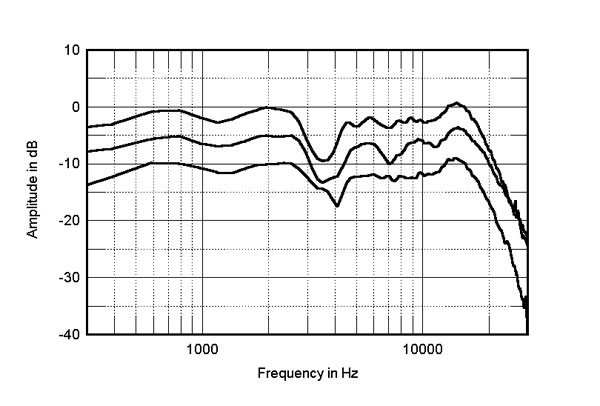
Fig.4 Amrita AMRIT-MiniMonitor, anechoic response on tweeter axis (center), 15° horizontally off-axis on tweeter side (top) and 15° horizontally off-axis on other side (bottom).
Returning to fig.3, the left-hand curve is the nearfield response of the woofers, measured in front of the forward unit's dustcap. The contribution of the rear-firing port is not accounted for in this measurement, but the intrinsic response of the woofers is 6dB down at a quite high 53Hz. The port broadly covers the octave between 30Hz and 60Hz, but it is impossible to assess its effect on LF extension from these measurements. More significant is a sharp suckout in the upper bass, centered on 160–166Hz. Undoubtedly the lack of energy in this region correlates with the subjective impression that this Amrita lacked overall impact.
The spatially averaged in-room response (fig.5), taken with the grilles on, broadly ties in with the anechoic response in the treble, although the lack of on-axis energy in the crossover region is now smoothed out. Note, however, the energy peak in the midband, which is the fundamental sound in front of the speakers. It is somewhat alleviated off-axis, again suggesting that this is a speaker that should not be toed-in to the listening seat. The lack of energy in the upper bass noted earlier is also apparent, and the entire bass region is somewhat shelved down in-room compared with the midband level, though there is useful output down to 35Hz or so. The individual measurements taken to derive this response curve indicate that pair-matching was only fair, and that the smoothest sound through the midrange and treble (given that the crossover notch then deepens in amplitude) is to be heard with the listener's ears level with the woofer. With my listening chair, this would demand the use of 30"-high stands!
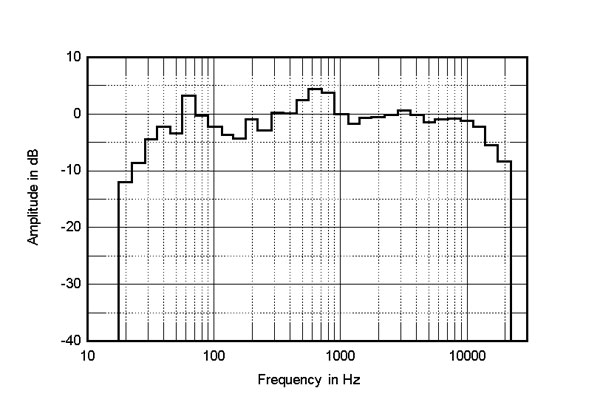
Fig.5 Amrita AMRIT-MiniMonitor, spatially averaged, 1/3-octave in-room response.
Finally, the manner in which the Amrita's impedance amplitude (continuous line) and phase (dotted line) change with frequency is shown in fig.6. The woofer peak can be seen at 60Hz, with the port tuning almost an octave lower indicated by the minimum around 33Hz. The odd kink in both amplitude and phase responses at 200Hz was present on the curve for both speakers and may be an artifact of the compound loading. The generally low nature of the impedance, particularly in the upper bass, suggests that the Amrita Mini needs a good beefy power amplifier to be driven to high levels.—John Atkinson
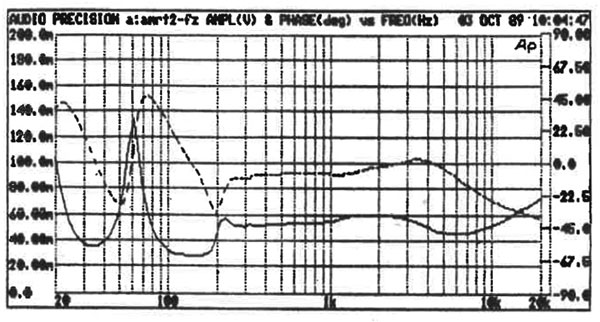
Fig.6 Amrita AMRIT-MiniMonitor, electrical impedance (solid) and phase (dashed) (2 ohms/vertical div.). Note that the phase scale is inverted, with inductive phase angles incorrectly shown as negative rather than positive.
Footnote 1: This review, along with those of the Rogers 7T and Paradigm Control Monitor published in the same issue, was the last to be performed using a measurement system, that I developed myself. It comprised a home-brewed pulse generator with the sound of the loudspeaker reproducing that pulse fed to a Heathkit storage oscilloscope. I then used a FFT program that I wrote in Microsoft's QuickBasic programming language to analyze the impulse response captured by the 'scope and a graphing program I also wrote in QuickBasic to plot the spectra. But at the fall 1989 AES Convention in New York, I caught a demonstration of the brand-new MLSSA system from DRA Labs, which offered enormously flexible processing power and which we promptly purchased. I have used MLSSA ever since for Stereophile's loudspeaker reviews.—John Atkinson
- Log in or register to post comments




































